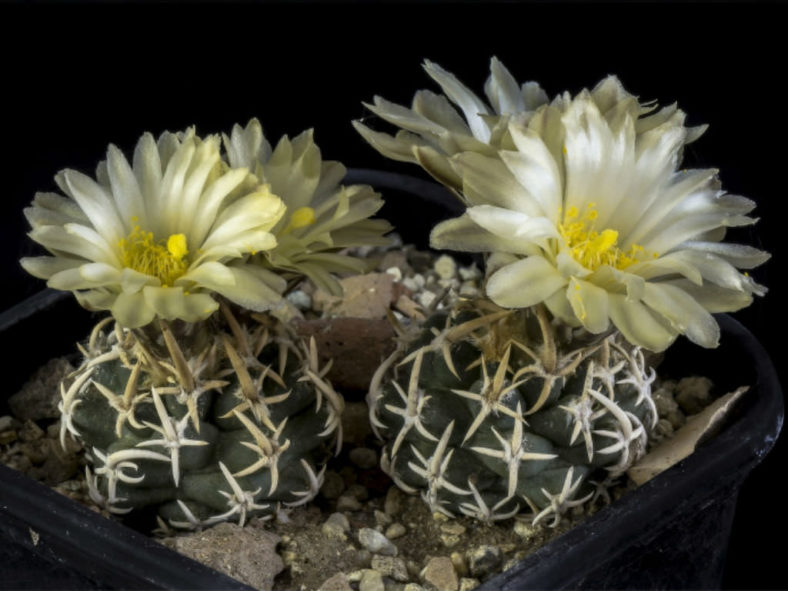Pediocactus is a genus of cacti that includes some of the smallest cacti in the United States, mainly growing in northern Arizona and Utah. Eight of the nine species are rare, and most occur in very localized areas, often confined to just a few square miles. Pediocactus simpsonii is the most widespread and extremely cold-hardy.
The generic name originates from the Greek word "pedion," meaning "plain," in reference to the Great Plains of the United States, where these plants are commonly found. The species are called Hedgehog Cacti, though that name is also applied to Echinocereus and Echinopsis. They may also be called Pincushion Cacti, a common name for other genera within the family.
These cacti are often prized by collectors who can grow them, as they typically prove challenging in cultivation and are often grafted. They are small, globose with tubercles and small spines, usually solitary, up to 3.2 inches (8 cm) tall. The spines vary and may be dense or almost non-existent. Flowers arise from the top of the stem and may be pink, white, or yellow. Fruits are somewhat fleshy, drying with age, and dehiscent.

Growing Conditions and General Care
Pediocactus are difficult to grow on their own roots. Therefore, they are cultivated only by skilled and experienced cactus growers. The growing medium must be porous to drain well and dry out completely. They thrive in partial shade and require protection from the sun during the hottest part of the summer.
These cacti do not like high temperatures and humidity levels in greenhouses. They like "wind" and should be placed in a well-ventilated position. Water them moderately from spring to fall, allowing the soil to dry out between waterings. The rest of the year, keep them in dormancy.
Pediocactus are very slow growers. For this reason, they are frequently grafted onto strong, hardy cactus stocks, such as Opuntia and Echinocereus.
The flower buds remain dormant on the plant's apex throughout the winter and will open in spring when temperatures rise. To avoid damaging flower buds, the grafted plants should not be allowed to dry out completely. Light watering in winter helps keep the flowers hydrated and healthy.
Propagation
Pediocactus can be propagated from seeds, but its seeds can take several years to germinate. Seedlings do not grow well either, and some die. For this reason, plants are frequently grafted.
Links
- Back to genus Pediocactus
- Succupedia: Browse succulents by Scientific Name, Common Name, Genus, Family, USDA Hardiness Zone, Origin, or cacti by Genus